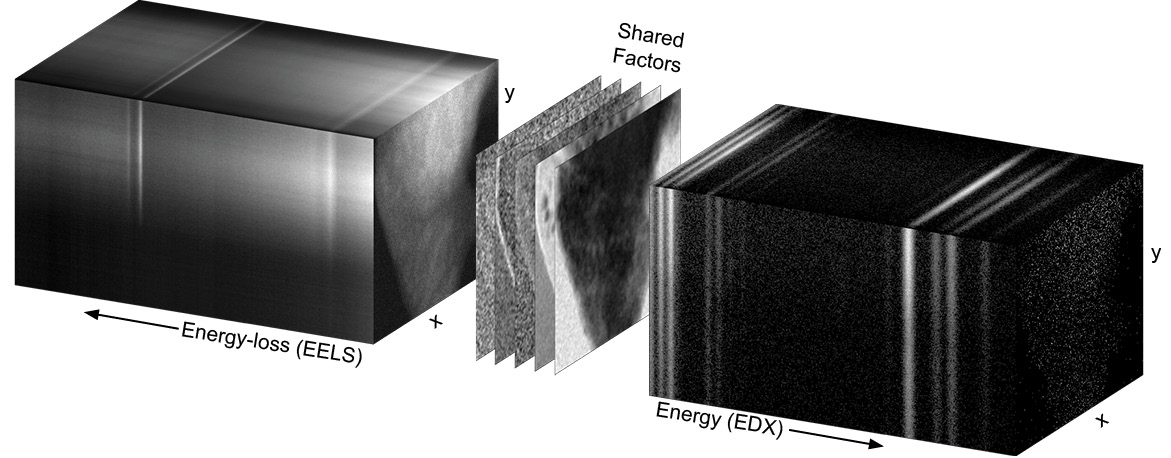Data fusion and geometric hyperspectral unmixing applied to STEM-EELS and EDX to solve a complex heterogeneous core-shell Co-P catalyst
- Abstract number
- 633
- Event
- European Microscopy Congress 2020
- DOI
- 10.22443/rms.emc2020.633
- Corresponding Email
- [email protected]
- Session
- PSA.5 - Nanoparticles & Catalysts
- Authors
- Dr. Thomas Thersleff (2), Serhiy Budnyk (1), Larissa Drangai (1), Prof. Adam Slabon (2)
- Affiliations
-
1. Austrian Centre of Competence for Tribology, AC2T research GmbH
2. Stockholm University
- Keywords
Catalyst, Data Fusion, EDX, EELS, Multivariate statistics, STEM Spectroscopy
- Abstract text
Nanostructured heterogeneous Co and Co-P shows great promise as a catalytic materials system for hydrogen evolution reactions in proton exchange membrane fuel cells largely due to the high density of buried metal/oxide interfaces [1]. However, studying the chemical and morphological landscape of these materials is challenging due to the need for high spatial resolution. While aberration-corrected STEM-EELS and EDX can assist, a number of additional complications hamper further development. First, the active element in this catalyst is P, which can be challenging to study with EELS and EDX in low concentrations. Second, these catalysts are hypothesized to exhibit a core-shell morphology. Consequently, it is difficult to isolate the core from the shell to study the underlying constituent phases in detail.
Here, we present a novel approach to study this system using multivariate methods adopted to the STEM spectroscopy community. First, we propose a method for fusing simultaneously-acquired EELS and EDX. We show that this essentially extends the spectral reach of both methods while counteracting some of the most difficult challenges such as data sparsity in EDX. Second, we employ a hyperspectral geometric unmixing algorithm based on minimizing the volume of the data simplex. This blind source separation method allows us to obtain a much more reliable estimate of the pure spectra pertaining to the core while cleanly separating it from the complex shell structure on both EELS and EDX data simultaneously. We show how this brings us to the conclusion that the core in this material is metallic Co alloyed with P. We also reveal that the system is best described as a ternary core-shell morphology, with two chemically distinct phosphate shells contributing to the overall structure [2]. We conclude by generalizing this data fusion and unmixing approach to other materials systems and comment on its potential impact.
Figure 1: Schematic of the weighted data fusion approach proposed in this study. Both the EDX and EELS work together to extract common and distinct features that share the same spatial dimensions.
- References
[1] K.W. Cho, H.S. Kwon, Effects of electrodeposited Co and Co–P catalysts on the hydrogen generation properties from hydrolysis of alkaline sodium borohydride solution, Catalysis Today. 120 (2007) 298–304. https://doi.org/10.1016/j.cattod.2006.09.004.
[2] T. Thersleff, S. Budnyk, L. Drangai, A. Slabon, Dissecting complex nanoparticle heterostructures via multi-modal fusion using aberration-corrected STEM spectroscopy, Submitted.
[3] T. T. acknowledges funding from the Swedish Research Council (VR project nr. 2016-05113)

